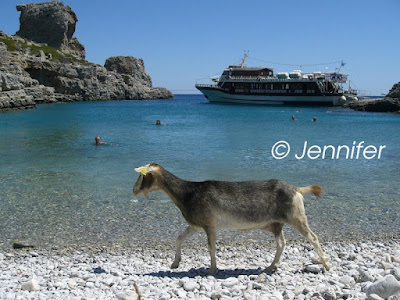E 'was recently published by
the book signed by Jacques Vallee and Chris Aubeck, which is
Unexplained Aerial Objects (unexplained aerial objects), from antiquity to our days:
Vallée Jacques & Chris Aubeck, "Wonders in the Sky: Unexplained Aerial Objects from Antiquity to Modern Times" , Tarcher, 2010, pp. 528 Beyond UAO-term use (
Unexplained Aerial Objects ) that has no less dubious of the traditional acronimoUFO, or the apparently more aseptic UAP (Unidentified Aerial Phenomena
)
"Wonders in the Sky" offers the reader many positive aspects to clarify a matter, that the UFO, which functions to accumulate evidence, never fails to present a common scientific about his state of the art.
When you are in the series, then called dei "pre-UFO", ovvero degli UFO prima dell'avvistamento di Kenneth Arnold del 1947, l'intera faccenda si complica ancor più, e quindi qualsiasi studio che cerchi di fare chiarezza è benvenuto come nel caso di questo lavoro di mole notevole.
La categoria di Pre-UFO è infatti un ossimoro non potendo esistere gli Ufo in un tempo ed in un contesto storico precedente le condizioni cognitive atte a favorire la definizione stessa di categoria Oggetti Volanti Non-identificati (UFO).
Vallée e Aubeck hanno pertanto selezionato un'ampia casistica consistente di 500 casi che secondo le loro analisi non riesce a trovare spiegazione in base alle conoscenze scientifiche attuali (ad esempio non sono spiegabili con meteore, comete, auroras, meteors, ball lightning, etc.)..
Rightly, the authors see in their
"Wonders in the Sky" a forerunner for future new research, which in this case had an initial strong acceleration with the development of the Internet and the group of researchers and bibliographers of
Magonia -exchange, mailing-list
directed by the Aubeck.
The meaning of this account is also a foreword by David Hufford, professor of Religious Studies at the University of Pennysylvania, and
known author of "The Terror That Comes in the Night" , which is
"in Wonders the Sky "from concept of" anomalies " Kuhn in the sense of the term, and also cited
the strong terms of "damage" (by science).
It is pleasing to discover that the student Hufford, riding the 60 and 70, is fascinated by their own assumptions Vallée, in particular those expressed in
"Passport to Magonia" , where the French computer abandoned the extraterrestrial explanation of First Instance of UFOs to replace it with one called "paraphyses", relying on folklore parallels with the narrative of the past.
Hufford intends to emphasize how
"Wonders in the Sky" no commitments on any assumptions and acting:
"without the distraction of premature Commitment to Any Particular interpretation ". Do you think that this attitude is" true science ".
At this point I have some considerations that go in a different direction to those indicated by Hufford.
1) Even the very choice of 500 cases between thousands of cases filed as "pre-UFO" or "UFO's Past" provides some commitment in a certain direction of analysis. The authors themselves admit that their selection is based on their background
on their being immersed in a Western culture, etc..
2) When the researchers esprimomo of categories to use when collecting their data, they do so inevitably from a hypothesis to be validated.
In If
"Wonders in the Sky" each witness is marked by "symbols" that are far from hygienic and have all the evocative power of the classifications UFO:
a) unidentified aerial lights
b) Items Non-Aircraft identified
c) Kidnapping
d) phenomena with physical evidence and
) Magnitude (isolated)
f) Entities associated with an aerial phenomenon
g) Communication
3) and Vallée Aubeck on the conviction that "most of the testimonials pointed observations of phenomena that have remained unexplained until now. "
To select the 500 cases have ruled that that part was easy reference, according to current knowledge on natural phenomena.
doing so is evident that the 500 remaining cases (not explained) that result from their selection, if they continue to be held together, as indeed they are, they in fact form the basis of some "hypothesis to be validated."
4) In their case selection, and Vallée Aubeck make another choice of ideology, namely that of not considering the science of "new phenomena" during its making.
While in some cases lack of data could be interpreted as a possible new natural phenomena and / or little known: ball lightning, earthquake lights, or in some specific cases it may be fascinating to try to interpret certain narratives of the past as Sprites (the phenomenon that the ionosphere along with TLEs know only from 1989).
There is another aspect that intrigues me in the selection of case studies and Aubeck Vallée, some cases that the French astronomer Camille Flammarion was placed in a special category
"bradytes" (slow fireballs from abnormal behavior) are driven back under the UAO phenomena.
legitimate choice that not only does not take into account how the construction of science about the anomalies, thus supporting a number of hypotheses to validate, and excludes others such as those of the natural phenomenon unknown or little known.
Perhaps better would be to make explicit the assumptions and / or working hypotheses, highlighting opportunities, concerns, problems, needs for new data or methods to a possible validation. Unlike so
proceeding Aubeck Vallée and give us the idea of \u200b\u200bbeing the continuation of the tradition of obsequious or Licostene which is a collection of the prodigious fact quite an end in itself and increasingly disconnected from the ways of scientific production.
This approach may perhaps improve the historical knowledge of individual cases, but can hardly help the emergence of new scientific paradigms, or simply a settling of new knowledge. Finally
is proper to make reference to the most interesting part of the book is the research and monitoring of certain sources on which the varied theories were based on extraterrestrial visitation in the past (the theory of ancient astronauts).
Here a thorough analysis that should be the primary source of jokes, references, artifacts and legends, brings new clarity to the facts instead of the UFO literature continues to report how it really happened.
Even more critical in this series and Vallée Aubeck detect a residue of facts worthy of further study, and that necessitates the search for other sources and information.















































